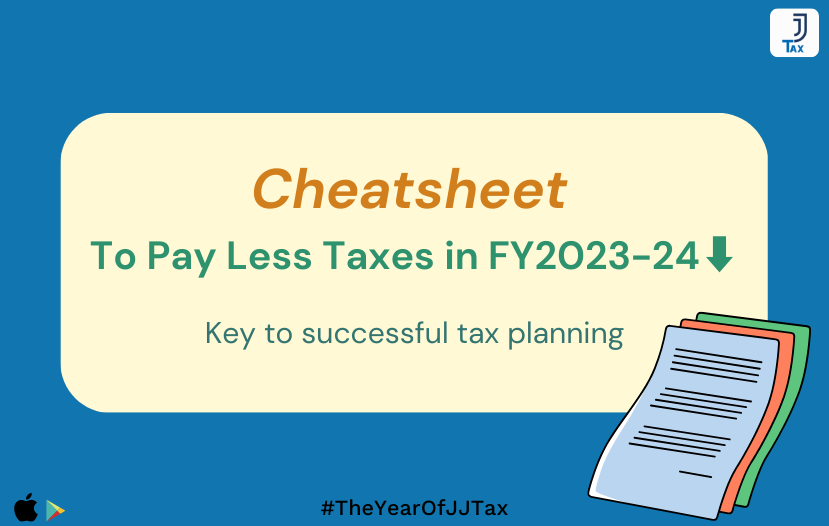Key To Successful Tax Planning💫

Welcome to our tax-saving extravaganza!
As a tax consulting firm, we're always one step ahead when saving your money. So let's dive into everything you need to know about legally paying less taxes in the upcoming financial year 2023-2024. Say goodbye to the last-minute panic and hello to stress-free tax planning!
Reviewing your finances at the start of a new financial year and considering potential changes that could reduce taxes and increase wealth is recommended. As we approach the increment season, it's important to remember that while a salary increase is great news, it may also result in higher taxes. A higher income can push an individual into a higher tax bracket.
Suppose an individual with a yearly income of Rs.10 lakhs receives a 20% raise; their tax bracket would shift from 20% to 30%. This means the additional Rs.2 lakhs earned beyond the Rs.10 lakhs, 20% threshold would be subject to a 10% higher tax liability. Similarly, if someone earning Rs.48 lakhs annually were to receive a 10% raise, their income tax would also incur an extra 10% surcharge.
Take Advantage of NPS Contribution for Tax Savings
Many companies offer their employees the option to contribute to the NPS, which is an untapped opportunity for tax savings. Contributions of up to 10% of the basic pay are tax-free under Sec 80CCD(2), yet only a small fraction of eligible employees have taken advantage of this benefit.
Not only is the NPS more cost-effective than mutual funds, it also provides better returns than other retirement savings options like Provident Fund, PPF, and insurance plans. Additionally, the NPS allows for partial withdrawals, and 60% of the maturity amount can be withdrawn tax-free.
The remaining 40% will be annuitized, but the income during retirement years is usually lower, making it practically tax-free. This option is particularly recommended for high-income earners with sufficient liquidity.
Use Tax Saving Investments for Maximum Benefits
It is often said that a good start is halfway to success, so it is advisable not to wait until the last few months of the financial year to begin tax-saving investments. If considering an ELSS fund, starting a SIP right after April. This will help spread out the risk over time instead of making a lump sum investment at the end of the year.
Similarly, even with a safe fixed-income option like PPF, investing as early as possible is best to take advantage of the power of compounding. The longer the investment horizon, the greater the power of compounding, which can result in significant wealth creation over time.
Revamp Your Salary Structure for Tax Benefits
At the beginning of the financial year, many companies offer their employees the opportunity to modify their Cost-to-Company (CTC) structure. To make the most of this opportunity, consider restructuring your salary to include more tax-efficient perks such as reimbursement of telephone and internet bills, fuel and travel expenses, meal coupons, and newspaper bills. Despite the decreased attractiveness of the car lease option after implementing GST, other expenses such as driver salary, petrol, insurance, and maintenance remain beneficial.
Due to COVID-related travel restrictions over the past two years, the Leave Travel Allowance (LTA) could not be utilized efficiently. However, now that travel restrictions have eased, it is worth opting for this significant tax saver in your CTC. Travel expenses for your family are eligible for tax exemption as part of the CTC. Remember that the LTA should be included in the CTC at the start of the year; you cannot opt for it later in the year or claim it while filing your income tax return.
Avoid TDS on Interest Income by Submitting Form 15G or 15H
To avoid tax deduction at source (TDS) on your interest income, you can submit Form 15G or 15H, provided your income does not exceed the basic exemption limit. However, ensuring that you meet the eligibility criteria for submitting these forms is crucial. Falsely claiming eligibility can lead to tax evasion, and you may face severe penalties from the tax authorities.
Bottom Line
As we come to the end of this newsletter, we hope that the tax-saving tips we've shared will help you reduce your tax liability and maximize your wealth. Remember, the key to successful tax planning is to start early, invest in the right instruments, and take advantage of all the tax-saving options available to you.

